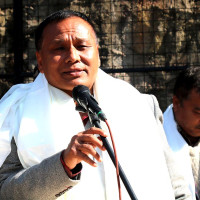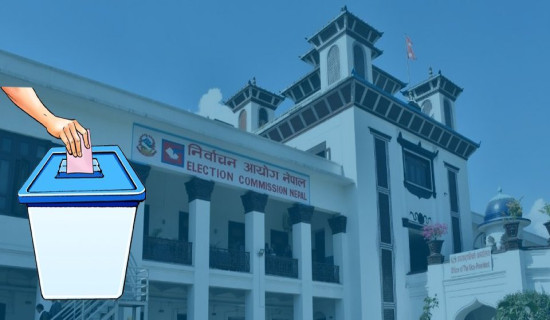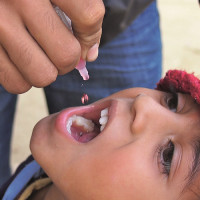- Saturday, 27 December 2025
Bust Stigma Associated With Leprosy
Leprosy is still one of the most poorly understood despite being one of the earliest diseases ever documented in human history. Leprosy is still stigmatised, discriminated against, and socially isolated even with medical advancements that have made it curable. This enduring discrimination traps people in a cycle of rejection, poverty, and hopelessness, which is frequently more harmful than the illness itself.
As leprosy is an old disease, its stigma shouldn't persist in the present era. Although we now have the means to eradicate leprosy as a public health issue, thanks to medical technology, society is still lagging in terms of shifting perceptions about those who are afflicted. The fight against leprosy stigma should be aimed at restoring people's human rights, dignity, and social acceptance in addition to the treatment of the disease.
Misconception
Leprosy is still one of the most poorly understood. A chronic infectious disease, Mycobacterium leprae, affects the skin, nerves, eyes, and mucous membranes. Contrary to popular belief, leprosy is not extremely contagious; instead, it spreads through continuous intimate contact with an untreated person. The prevalence of leprosy has dramatically declined worldwide with the introduction of multidrug treatment (MDT) in the 1980s. Each year, around 200,000 people still are afflicted by the illness primarily in low-income countries.
The myths and misconceptions surrounding the illness are more worrying than the illness itself. Still, people falsely think that leprosy is an incurable disease, a genetic curse, or a punishment from God. These beliefs encourage prejudice that causes people with the illness to be socially rejected and excluded. Even in modern times, discriminatory laws remain in place in certain countries, preventing individuals affected by leprosy from marrying, voting, or traveling freely. In addition to battling a bacterial infection, a person with leprosy must contend with prejudice from their own family and community. Since people who have leprosy are frequently rejected by their families and communities, hence stigma can take many different forms. They are often compelled to reside in different colonies, which causes them to feel incredibly alone and depressed.
Due to discrimination, many leprosy patients lose their jobs or have difficulty finding new ones. They become impoverished when they lack financial security, which makes it more difficult for them to get access to rehabilitation and medical care. Mental health problems from ongoing discrimination and rejection exacerbate stigma. Depression, anxiety, and low self-esteem are common among leprosy patients, which further complicate efforts to reintegrate them into society. Many persons with early leprosy symptoms refrain from getting medical attention out of fear of shame. This delay worsens the illness, resulting in impairments that could have been avoided with early intervention.
Misinformation has fueled the fear of leprosy. Many individuals continue to hold onto outdated beliefs that leprosy is not treatable, highly contagious, or a curse. These false beliefs encourage social exclusion and discrimination. Large-scale awareness campaigns are essential to change the misconception about leprosy. Governments, NGOs, and international health organisations should collaborate on initiatives that aim to educate people about the facts about leprosy. Educating children about the truth related to leprosy can build a more informed future generation. Schools should incorporate information about leprosy into their health and science curricula, emphasising that it is a medical condition like any other and should not be a cause for discrimination.
Shockingly, leprosy-related discrimination is still embedded in the legal systems of some countries. Leprosy was historically a ground for divorce, and in some countries, individuals with leprosy have been barred from voting, holding public office, or even traveling freely. Governments must abolish outdated laws that discriminate against people affected by leprosy.
Finding employment is difficult for many leprosy patients due to employer discrimination. Leprosy-affected people are frequently denied employment even after being cured owing to their medical history. Engaging communities with the facts is one of the best strategies to lessen stigma. Community and religious leaders, and teachers, can assist in changing attitudes in rural communities where leprosy stigma is most evident. Healthcare professionals’ explanations of leprosy facts and testimonies of cured people at community meetings can greatly reduce fears and disinformation.
Delayed diagnosis
The stigma is mainly associated with leprosy because most of the time the disease is diagnosed late after physical impairments have already occurred. Early diagnosis and treatment can greatly lessen stigma. Therefore, offering mobile clinics in isolated locations for screening, and treatment can detect leprosy in the early stage when physical deformities have not taken place and can greatly reduce stigma.
Governments, health institutions, schools, the media, and communities must all collaborate to reduce stigma and advocate it as a treatable illness. Hence, combating the stigma associated with leprosy is a fight for human dignity. Nobody should be banished because they have a fully curable illness. Let us work together to uphold the respect, acceptance, and opportunity that leprosy-affected people are entitled to by removing these obstacles.
(Dr. Lohani is the executive director at the Health Concern. lohanis@gmail.com,)

















